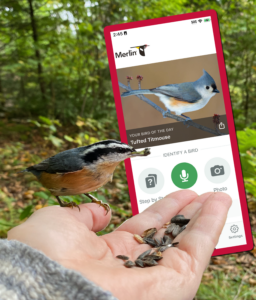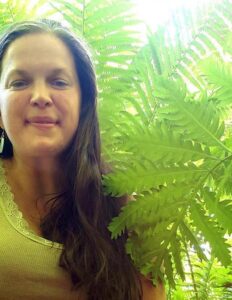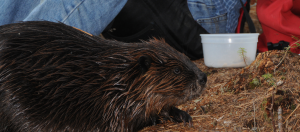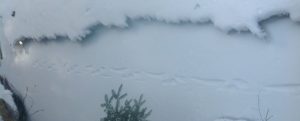In every walk with nature one receives far more than he seeks. ~ John Muir
Be the first to know about new events! Sign up to receive our monthly e-newsletter.
Personalized Programs: A program of your choice with a naturalist, just for your family group.
Ideas for nature watching in your neighborhood: Nature from Home
Find recordings of webinars here.
At BEEC we believe that everyone deserves to be able to access, enjoy, and engage with nature and the natural world. If you would like to participate in a program, but costs are are prohibitive, please contact us to discuss options.
Questions about programs? Call 257-5785 or email .
Upcoming Programs:
March 15th, April 26th, May 17th: Trail Tech for Beginners
April 12th: Café Botanica Ethnobotany Workshops with Dr. Jessica Dolan
May 3rd: Intro to Bird ID in the Field
BEEC’s Trail Tech for Beginners will introduce nature enthusiasts of all ages to the power of digital tools that enhance outdoor experiences and connect you to the world of citizen science. Whether you’re a beginner or hoping to enhance your skills, these hands-on workshops will empower you to use technology to explore, observe, and learn about nature in real-time while contributing to important conservation efforts. Join us in the field, and let’s discover together!
Each of these workshops is designed with beginners in mind, so don’t worry if you’ve never used these tools before! Come with an open mind and curiosity, and leave with the knowledge and skills to explore nature in new and exciting ways. See you out there!
Register
March 15: Trail Cameras – A Window into the Wild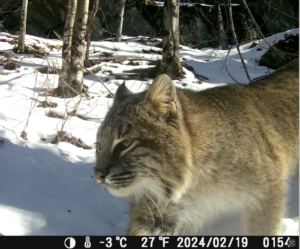
Workshop Overview: Learn how to set up and use trail cameras to capture wildlife in action. These cameras provide a behind-the-scenes view of the natural world—revealing nocturnal animal behavior, seasonal changes, and the hidden life of our forests and fields. Whether you’re interested in tracking local wildlife or simply want to learn how to better capture outdoor moments, this session will help you get started with basic trail camera skills.
Why You Should Attend: Trail cameras are a powerful tool for nature observation, and in this workshop, we’ll teach you how to use them with ease. No prior tech experience needed!
What You’ll Learn:
- How to set up and position a trail camera
- Understand camera settings and how to get the best shots
- Basics of interpreting the images and data captured
- How trail cameras contribute to wildlife monitoring and conservation efforts
- Beginner tips for troubleshooting and maintaining your trail camera
April 26: iNaturalist at the Vernal Pool – Exploring Seasonal Wonders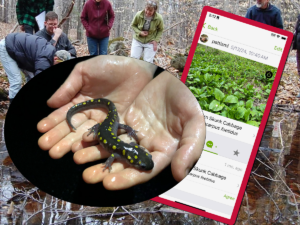
Workshop Overview: Join us at BEEC’s vernal pools and learn how to use the iNaturalist app to identify plants, amphibians, insects, and other creatures. Vernal pools come alive each spring, and iNaturalist willl help you capture and document your discoveries while contributing to research. This workshop will teach you the basics of identifying species and using iNaturalist to map your observations.
Why You Should Attend: Whatever your skill level, iNaturalist is a fun and easy way to learn more about the plants and animals you encounter. In addition, your observations help scientists monitor biodiversity!
What You’ll Learn:
- How to use the iNaturalist app to identify species in the field
- How to record observations, take photos, and upload them to the app
- The importance of vernal pools and how they support biodiversity
- Best practices for engaging with the iNaturalist community and contributing to community science
- How your observations can help track seasonal changes and rare species
May 17: Birding with Merlin & eBird – Unlock the World of Birds
Workshop Overview: In this workshop, we’ll introduce two powerful tools for bird enthusiasts: the Merlin Bird ID app and eBird. Merlin helps you identify bird species based on location, size, color, and behavior, while eBird is a global platform for tracking and sharing bird sightings. Whether you’re an aspiring birder or a longtime enthusiast, we’ll guide you through the basics of using these apps to enhance your birdwatching experience and contribute your sightings to the larger scientific community.
Why You Should Attend: Birding is an exciting and rewarding hobby, and with the help of Merlin and eBird, it’s easier than ever to start identifying and tracking birds. This workshop will give you the tools to expand your birdwatching skills while helping researchers track bird populations and trends.
What You’ll Learn:
- How to use the Merlin Bird ID app to identify birds by their physical features and sounds
- The basics of recording and submitting bird sightings to eBird
- How to track your birding progress and discover new species
- The importance of citizen science in bird conservation
- Tips for improving your bird identification skills in the field
Café Botanica Ethnobotany Workshops with Dr. Jessica Dolan
Saturday, April 12th, 2-4p at BEEC: Spring Beauty ~ Blood Cleaners, Ephemerals & Early Greens
This is part two of a four-part series; still to come – June, & September dates TBD – stay tuned!
$40 for members, $45 for non-members
$30 for Zoom participants
Dr. Jessica Dolan’s Café Botanica Ethnobotany Workshop will be a four-part series on wild edible and medicinal plants of the Eastern Woodlands landscapes of Southern Vermont. Each session will provide plant identification for over 20 species, seasonality, methods for their sustainable harvest and caretaking of plant community regeneration, uses, resources for learning more, and fun! We will also sample foods, teas and other confections made out of the species featured, including foods made by local farmers and harvesters, to promote awareness about Windham County wildcrafters and food producers.
Early spring brings us some of the most popular wild edibles: ramps and fiddleheads, both of which grow happily on Vermont landscapes. But there are other more prolific wild edibles at this time, many of which are delicious, green, and dedicated to the folk tradition of “cleaning” our blood that may have gotten more “stagnant” during the wintertime. Spring also accords us opportunities to harvest, eat, and manage some of the dominant non-native plants on the landscape, such as knotweed. In Cafe Botanica #2, we will discuss identification of wild onions, sassafras, ramps, nettles, violets, dandelion, fiddleheads, coltsfoot, spruce tips, cattail shoots, lilacs and more! We will learn about and sample foods such as knotweed crisp, dandelion fritters, nettlekopita, lilac spritzer, or wild greens for salad ingredients (depending upon what is up)!
Space is limited and advance registration is required. Please register early to ensure your spot.
Register
Intro to Bird ID in the Field
Saturday, May 3rd (rain date May 4th), 7-10a at BEEC with naturalist Daniel Dubie
$20 for members, $25 for non-members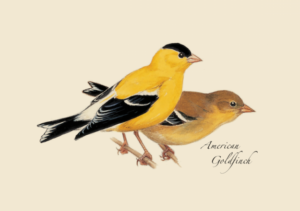
It’s peak time to see migratory birds in our area! Learn basic field identification methods for a variety of birds that live in and migrate through southern Vermont. The outdoor based workshop is designed for people new to identifying birds and will explore a variety of habitats at BEEC.
Some binoculars and field guides are available to use though if you have some of your own, please bring them along.
Register
Personalized Programs
Are you looking for a unique gift for a nature-lover? Would you like some inspiration to deepen your connection with the natural world? BEEC naturalist Patti Smith will take you to her favorite places or join you in yours. Because these programs are just for YOU, they can be adapted to your level of fitness, adventurousness, and particular interests.
The per hour rate is $75 for BEEC members / $95 for non-members. Gift certificates are available.
Email with questions or to arrange a program.
Purchase a gift certificate here
Know the Night
Evenings
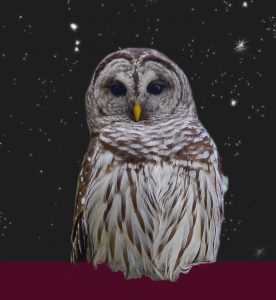 Would you like to feel more comfortable in the night forest? There is much to enjoy! Patti has spent countless hours in the woods after dark and looks forward to sharing these pleasures with you. Learn some navigation tricks and find out what to bring to feel safe and comfortable. We will take a hike, tell tales of nocturnal creatures around a campfire, and finish up with some star-gazing from the summit of Heifer Hill. E-mail to schedule.
Would you like to feel more comfortable in the night forest? There is much to enjoy! Patti has spent countless hours in the woods after dark and looks forward to sharing these pleasures with you. Learn some navigation tricks and find out what to bring to feel safe and comfortable. We will take a hike, tell tales of nocturnal creatures around a campfire, and finish up with some star-gazing from the summit of Heifer Hill. E-mail to schedule.
By the Shores of Moose Meadow Pond
Evenings
Night-singing insects
Evenings, August-September, 1-2 hrs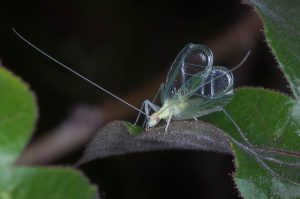
Beginning in August, the songs of birds give way to the songs of insects. Meet Patti at Heifer Hill at dusk to listen to some of the many singers. We will work our way to the summit of Heifer Hill listening to and looking for katydids, tree crickets, ground crickets, and more. Using insect nets and magnifying boxes, we will get a close-up look at these musical insects. We’ll tell the temperature from the rich chirps of a snowy tree cricket and admire the antennae of a sword-bearing conehead. Which one is the “Nixon bug?” Learn to recognize the songs of some of the most recognizable species and you will hear them in your own backyards. If you choose the right date, you might also watch the moon rise from the summit of Heifer Hill.
What’s in YOUR Woods
Anytime
Naturalist Patti Smith will join you for an amble in your woods (or another favorite place). Arrange a trip during snow season to find tracks and other wildlife sign. Which birds are there and what are they up to? What trees and plants grow there and why? Patti has spent a lot of time in a lot of different woods in our regions and would love to find out what’s unique about yours. We can tag plant species you’d like to remember. You will receive a digital map showing the walking route and what was found where. E-mail to schedule.
Porcupines in Winter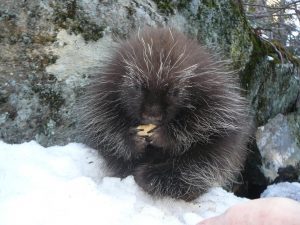
Evenings, January through mid-April
Visit porcupine den sites and feeding areas to learn about these charming creatures and how they manage in the season of ice and snow. Meet one of Patti’s study porcupines? Possibly.

